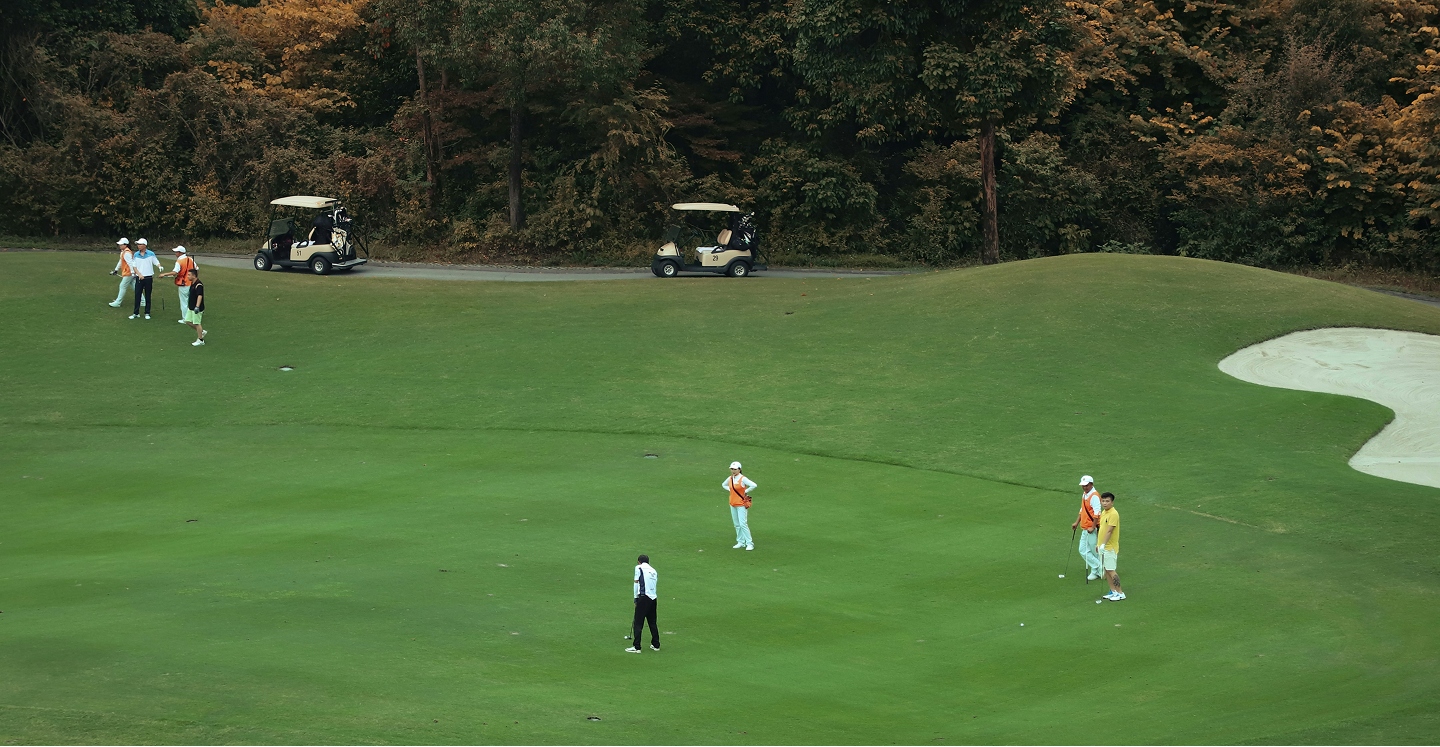Slow play has been golf’s most persistent challenge for decades. What should be a relaxing four-hour round often stretches to five or six hours, testing even the most patient golfers. While rangers on the course and signage help, GPS technology is revolutionizing how golf courses tackle this age-old problem with data-driven precision.
The Hidden Costs of Slow Play
94% of golfers believe that slow play is a problem and courses need to address it. The ripple effects extend beyond individual rounds. When groups fall behind, it creates a domino effect that can back up the entire course, turning what should be isolated delays into course-wide problems that affect every subsequent group.
But slow rounds don’t just frustrate players—they directly impact a golf course’s bottom line.
Fewer rounds per day means reduced revenue from green fees, cart rentals, and pro shop sales. What’s more concerning is that slow play drives customers away permanently, so courses will need to put more money towards acquisition efforts, rather than golfer retention, which is more economical in the long run.
Real-Time Tracking: The Game Changer
GPS technology transforms pace of play management by providing real-time visibility into the location and movement patterns of every cart. Instead of relying on periodic marshal checks or player complaints, course operators can monitor the entire course continuously from a centralized dashboard.
This constant monitoring reveals critical insights:
- Bottleneck identification – Pinpoint exactly where delays form and why
- Timing analysis – Track how long groups spend at each hole and transition area
- Pattern recognition – Identify course areas that consistently cause slowdowns
Armed with this granular data, golf course managers can make informed decisions rather than relying on guesswork, and staff can respond appropriately to different situations.
Automated Alerts and Intervention
One of GPS technology’s most powerful features is its ability to automatically identify slow play without human intervention. Where the average course needs staff to constantly monitor player pace, a golf cart GPS eliminates the need for human supervision. The system continuously compares each group’s progress against optimal pace benchmarks, triggering alerts when groups fall behind schedule.
These automated alerts serve multiple purposes:
- Course staff receive immediate notifications about developing problems, allowing them to intervene before minor delays become major backups
- Alerts can specify exactly which hole the slow group is playing and how far behind they’ve fallen, enabling targeted messaging.
- Systems can send gentle reminders directly to the GPS screens in slow groups’ carts, encouraging them to pick up the pace without interrupting other players on the course
Data-Driven Course Optimization
Golf cart GPS tracking generates valuable data on how golfers navigate the course, allowing course managers to optimize course operations and identify opportunities for improvement.
The data reveals which holes consistently cause delays and why. Perhaps the fourth hole always runs slow because the green is undulating, or maybe the par-5 seventh hole creates backups when longer hitters attempt to reach in two. Understanding these patterns allows course managers to make targeted improvements.
Some courses utilize GPS data to dynamically adjust tee time intervals. On days when pace tends to run slower—perhaps due to weather conditions or holiday play—they can adjust course setup to play faster. Conversely, when conditions favor faster play, they can stick to 10-minute intervals.
Proactive Problem Prevention: The Future of Pace Management
Traditional pace of play management is reactive—problems are addressed after they occur, when golfers are already frustrated. GPS systems enable a proactive approach that prevents many issues from developing in the first place. Some are now equipped with machine learning and AI algorithms that can also predict pace problems in advance or automatically adjust course operations in real-time to maintain optimal flow.
For example, Reach Golfer’s GPS can predict potential bottlenecks before they form. If three groups approach the same par-3 hole simultaneously, the system will immediately alert the carts on the course via 2-way messaging instead of dispatching a marshal, which is more time-consuming and labor-intensive. This predictive capability transforms pace management from crisis response to preventive maintenance.
GPS data also helps with pre-round planning. Course managers can review typical flow patterns for specific days and times, adjusting staffing levels and marshal deployment accordingly. They might position beverage cart staff in areas where groups typically experience delays, turning potential frustration into positive customer service opportunities.
Solve Pace Of Play With Reach Golfers
GPS technology isn’t just solving golf’s pace of play problem – it’s transforming how courses operate entirely. By providing real-time visibility, automated monitoring, and data-driven insights, GPS systems turn pace management from a reactive challenge into a proactive opportunity for operational excellence.
For golf courses serious about improving pace of play while enhancing customer satisfaction, GPS technology isn’t just an option – it’s becoming essential infrastructure for modern golf operations.




